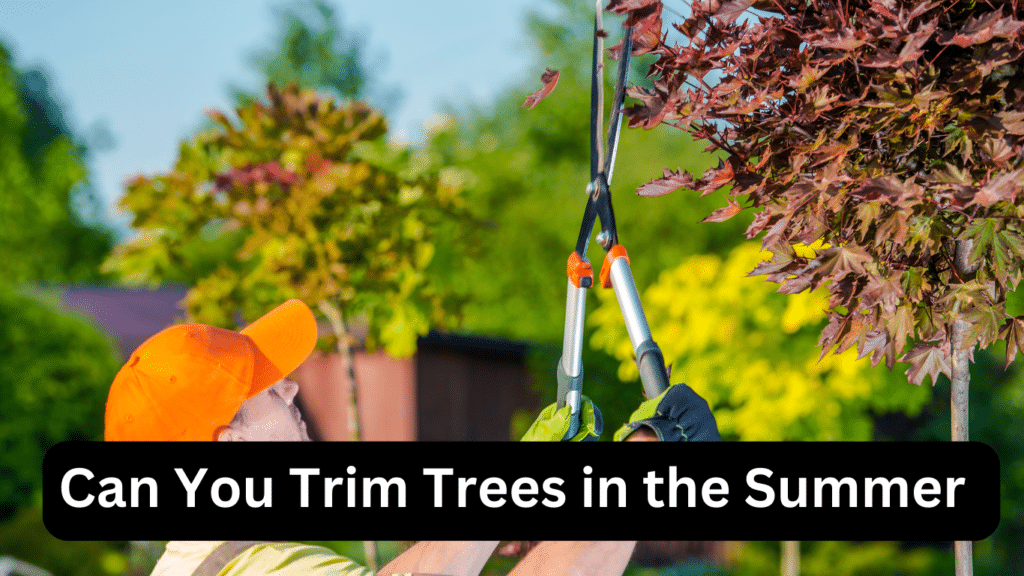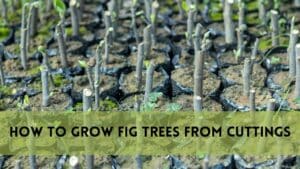Tree pruning is an essential aspect of tree care that promotes overall tree health and ensures safety for nearby structures and people. The best time to prune trees is generally during their dormant season when deciduous trees have shed their leaves. Trees are less susceptible to stress and disease during this period, making it the ideal time for most pruning activities. However, there are certain exceptions to this rule. Some trees, such as fruit and evergreens, benefit from summer pruning. Additionally, specific tree types like maple, birch, and walnut trees are better suited for trimming during the summer months. Let’s delve deeper into the topic of summer tree pruning, exploring the benefits and factors to consider when bending the rules.
The Best Time to Prune Trees
Pruning during the dormant season, usually in late fall or winter, allows trees to recover more efficiently from the cutting. During this time, the tree’s energy is redirected towards root development, preparing the tree for new growth when spring arrives [1]. Deciduous trees, which lose their leaves during the colder months, are best pruned during this period to minimize stress and prevent disease transmission through open cuts.
Can You Trim Trees in the Summer?
While dormant season pruning is generally recommended, some tree species thrive with summer pruning. Fruit trees, such as apple and peach trees, benefit from summer trimming to improve fruit production and maintain their shape and structure.
Evergreen trees can also be pruned during summer, as they continuously retain foliage throughout the year, making them more resilient to pruning stress. Moreover, specific species like maple, birch, and walnut trees can be pruned in summer without adverse effects.
The Benefits of Summer Pruning
Addressing Safety Concerns: When to Prune During Summer
In some cases, summer pruning might be necessary due to safety concerns. For instance, if a tree poses a hazard with overhanging branches or dead limbs, immediate pruning during the growing season might be required to prevent accidents. However, consulting with a professional arborist is crucial to ensure safe and proper pruning practices.
Factors to Consider for Summer Pruning
When pruning during the summer, it’s essential to consider specific factors to minimize stress and damage to the tree. Proper safety measures, such as using sharp and clean pruning tools, will help ensure clean cuts and reduce the risk of injury to the tree.
Applying latex paint to pruning cuts can deter fungus-carrying beetles, reducing the chance of infection and decay. Arborists also recommend avoiding excessive pruning during summer, as it can discourage new growth for the following season.
The Impact of Summer Pruning on Tree Growth
Pruning during the growing season, especially during peak growth, can hinder a tree’s development. Summer pruning removes active, energy-producing leaves and can disrupt the tree’s ability to photosynthesize and store essential nutrients. This disturbance may lead to reduced growth and vigour, affecting the tree’s overall health in the long run.
The Importance of Heavy Pruning During the Dormant Season
To ensure optimal tree health and growth, heavy pruning should be reserved for the dormant season when the tree is not actively growing. Trees can recover more effectively during this period from significant cuts, and energy allocation is primarily directed towards root development. Proper heavy pruning during the dormant season promotes balanced and vigorous growth in the following spring.
Expert Advice on Summer Tree Pruning
Arborists and tree care professionals have varying opinions about summer pruning. Some argue that it should be avoided whenever possible, while others acknowledge specific scenarios where summer pruning is unavoidable. Ultimately, the decision should be based on the tree’s health, safety concerns, and potential impact on future growth.
When Summer Pruning is Unavoidable
Despite the general rule of dormant season pruning, some situations may necessitate summer tree trimming. For instance, emergency pruning due to storm damage or safety hazards may require immediate action during the growing season. In such cases, following proper pruning practices and seeking professional advice to minimize adverse effects on the tree’s health is essential.
Frequently Asked Questions
What are the Risks of Trimming Trees in the Summer?
Trimming trees during the summer can pose several risks to the health and vitality of the tree. The main concern is that summer is the peak growth period for most trees, and pruning during this time can disrupt their natural growth cycle. Some risks associated with summer pruning include:
- Stress on the Tree: Summer pruning removes leaves vital for photosynthesis and energy production. This sudden loss of foliage can stress the tree and hinder its ability to produce essential nutrients.
- Reduced Vigor: Pruning during the active growing season can diminish the tree’s overall vigour and vitality. It may result in stunted growth and weaken the tree’s ability to withstand environmental stressors.
- Vulnerability to Pests and Disease: Fresh pruning wounds are more susceptible to pest infestation and invasion by disease-causing pathogens. These wounds heal more slowly in summer, increasing the tree’s vulnerability to potential threats.
- Discouraged New Growth: Excessive summer pruning can discourage the tree from producing new growth for the following season. In the long run, this may lead to a less vibrant and less healthy tree.
To avoid these risks, it is generally best to reserve heavy pruning and significant tree trimming for the dormant season when the tree is not actively growing and can recover more effectively from the cuts.
Which Trees Should Be Pruned in the Summer?
While the dormant season is generally preferred for tree pruning, there are specific tree types that can benefit from summer pruning. Some trees that are well-suited for trimming during the summer months include:
- Fruit Trees: Summer pruning is particularly beneficial for fruit trees such as apple, peach, and cherry trees. Removing excess growth and diseased branches during this time can improve fruit production and enhance the overall shape and structure of the tree.
- Evergreen Trees: Evergreen trees retain foliage throughout the year and can handle pruning stress better than deciduous trees. Summer is a suitable time to prune evergreens to maintain shape and remove damaged or unwanted branches.
- Maple, Birch, and Walnut Trees: Certain deciduous tree species like maples, birches, and walnuts can tolerate summer pruning without significantly adverse health effects. However, caution should still be exercised, and pruning should be limited to necessary and corrective actions.
What are the Benefits of Summer Pruning for Fruit Trees?
Summer pruning offers several advantages for fruit trees, contributing to their overall health and fruit production:
- Enhanced Sunlight Exposure: Removing crowded or excess branches allows more sunlight to reach the tree’s canopy and fruit-bearing branches. Increased sunlight exposure promotes better fruit ripening and quality.
- Better Air Circulation: Pruning opens up the tree’s canopy, improving air circulation and reducing the risk of fungal diseases that thrive in humid environments.
- Fruit Size and Quality: By selectively pruning certain branches, the tree can redirect its energy to produce larger, juicier fruits with improved flavour.
- Shape and Structure: Summer pruning helps maintain the tree’s desired shape and structure, making it easier to manage and harvest fruit.
- Pest and Disease Control: Trimming away diseased or infested branches during summer can prevent the spread of pests and diseases within the tree.
Can You Cut a Branch off a Tree in the Summer?
Yes, if necessary, you can cut a branch off a tree during the summer. However, it is essential to exercise caution and follow proper pruning practices to minimize stress and potential damage to the tree. If the branch poses a safety hazard or needs corrective pruning, such as removing a diseased or dead limb, it is acceptable to perform the pruning during the growing season.
When cutting a branch off a tree in the summer, consider the following:
- Safety First: Ensure your safety and the safety of others by using appropriate safety gear and tools.
- Clean Cuts: Use sharp and clean pruning tools to make smooth cuts, reducing the risk of bark tearing and damage.
- Limit Heavy Pruning: Avoid heavy pruning during summer, as it may negatively impact the tree’s growth and vitality.
- Monitor the Tree: After pruning, keep a close eye on the tree for any signs of stress or disease and seek professional advice.
What Season is Best to Trim Trees?
The best season to trim trees is during their dormant period, typically in late fall or winter. During dormancy, deciduous trees shed their leaves and are less active in growth. Pruning during this time allows the tree to recover more efficiently from the cuts and encourages vigorous growth when spring arrives.
For most trees, the dormant season is the safest and least stressful time for pruning activities. However, as mentioned earlier, specific tree types, such as fruit trees and evergreens, can benefit from summer pruning. Ultimately, it is essential to assess the tree’s health, consider safety concerns, and seek professional advice when planning any tree trimming, regardless of the season.
Conclusion
While the dormant season remains the best time for most tree pruning activities, summer pruning can benefit specific tree types. Under certain circumstances, fruit trees, evergreens, and certain species like maple, birch, and walnut trees can be pruned during the summer without significant adverse effects. However, it’s crucial to be cautious and consult with a professional arborist when considering summer pruning. Following expert advice and proper pruning practices will help maintain tree health and ensure safety while bending the rules for summer tree care.





